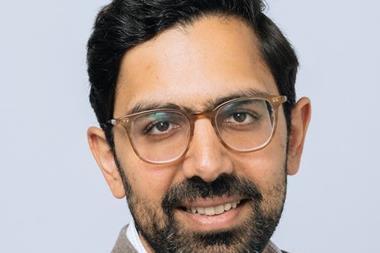Datamonitor's new report, UK Health Insurance 2002, reveals continuing stasis caused by burgeoning premiums. Fiona O'Regan analyses the results
The health insurance market is facing a huge degree of uncertainty at the moment.
Recent announcements by the government of its intention to increase the amount of money invested in the NHS have created an unclear picture of the future role the NHS will have to play in healthcare provision. Datamonitor's new report, UK Health Insurance 2002, examines six of the main segments of the health insurance market.
Private medical insurance (PMI) is the largest segment of the UK health insurance market and currently things are not looking bright for this market. The total number of policyholders remained relatively static between 1996 and 2000, growing at an average of 2% annually. The growth that has occurred is attributable to increases in the number of group policyholders between 1998 and 2000. During this period, group PMI policyholders increased from approximately 2 million to 2.32 million. It is expected that this element of the market will continue to grow, but not at the same levels. Datamonitor estimates that in 2001 the number of group PMI policyholders was about 2.4 million, representing a 3.3% increase on the 2000 figure.
The PMI market's overall growth has been adversely affected by events in the individual market, which has experienced a gradual decline in the number of policyholders since 1996. Between 1996 and 2000 the number of policyholders fell from 1.30 million to 1.14 million. This represents a decrease of 160,000 policyholders, or an average of 3.1% annually. Datamonitor anticipates that this trend would continue in 2001, although at a slower rate than before and estimates that the number of individual policyholders stood at 1,110,000.
Two trends can be identified within the PMI market: the slow yet steady growth in the number of group policyholders and the gradual decline in the number of individual policyholders. These trends are the result of the different experience the two groups of consumers have had with regard to PMI plans. The individual market has been subject to considerable hikes in premium rates in recent years leaving many people unable to afford PMI. In contrast, the far more price-sensitive group PMI market has not seen these large increases.
Premiums ahead
The mean annual premium within the individual market has been growing at an average annual rate of 9.7% over the past five years. In 2000, the mean annual premium was £1,001, this represents a 14.9% increase in 1999. Datamonitor expects this trend to continue and estimates that the average annual premium for an individual will be approximately £1,135 in 2001. This increase in premiums is being driven by two main factors. First, there has been an increase in the number of lives covered under each policy. Between 1999 and 2000 there was a 6.5% increase, or 401,000, in the number of lives covered by PMI. There was not a corresponding increase in the number of policyholders, which increased only by 2.1%, or 70,000. So each policy is now covering more people than in the past. In 1999 on average each policy covered 1.8 lives, this rose to 1.9 in 2001.
Second, claims costs have been increasing. Between 1996 and 2001 the mean annual claim per policy grew at an average annual rate of 5.1%. Most of this growth was on the individual side, which serves to partially explain why the individual policyholders incur higher premium increases. In 2000 the mean annual claim in the individual market was £758, which represented a 10.2% increase in 1999 levels. Datamonitor expects this trend to continue into 2001, which would result in the individual market having an average claim per policy of £782.
In comparison the group market has been experiencing a decrease in mean annual claims since 1998 and in 2001 the average claim made on a group policy was £383, this is 50% lower than the average individual claim.
Insurers are aware that the ever-increasing rise in premiums is causing people to exit the PMI market and is doing little to attract new people and as such they are taking steps to limit the impact of rising claims through improved claims management practices. Efforts have been made to streamline the claims administration process by introducing new technologies that can process claims faster.
Insurers are also challenging the bills with which they are faced. There have been numerous stories in the press highlighting the inflated charges insurers incur for both procedures and medical products, including such stories as £2 aspirin pills and £70 tins of talcum powder. It is not uncommon for there to be large discrepancies between what self-paying individuals are charged and what insurance companies are charged,
Consequently PMI providers have invested time and resources into thoroughly examining what they are charged for. WPA has introduced a system whereby it asks consumers to pay for the cost of their treatment up front and WPA will reimburse them within 24 hours. This then reduces claims costs as the patient is charged the lower of the two-tier rates. Other solutions including establishing hospital networks and intervening in private care have also been employed.
Product innovation
Some industry experts believe that the only way real progress is going to be made in terms of decreasing claims costs and increasing revenues, is through product innovation.
There have been a variety of developments in this area since 1999. Product innovation has included the introduction of the high excess polices, no claims discounts, co-insurance and fixed price cover. All, bar fixed price cover, are built around the notion of converting the patient back into a consumer. A product that requires the policyholder to make some contribution towards the costs encourages people to consider whether or not the consultation or treatment is necessary.
Bupa and PPP Healthcare have continued to dominate the individual PMI market in 2000, but there has been a steady erosion of their dominance for many years. About 15 years ago they accounted for 70% of the total PMI market. In 1999, however, they accounted for 57.4% of the total PMI market and 51.9% of the individual market. In 2000 this trend appears to have reversed slightly as their share of the individual market increased by 3.3%.
Some of the smaller health insures have displayed signs of rapid growth over the past number of years, notably Royal & SunAlliance, which has grown considerably since its entry into the market as a result of strong brand awareness among consumers coupled with a strategy of undercutting existing players. Between 1996 and 2000 its premium income grew at an average yearly rate of 40.3%.
The two largest health insurers, Bupa and PPP Healthcare, again dominate the group medical market, accounting for 68.5% of premium income in 2000. From 1995-1999 Bupa suffered severe erosion of its market share as its gross earned premiums fell by an average of 2.9%. It should be noted that Bupa displayed strong premium income growth of 24% between 1998 and 1999 and approximately 23% between 1999 and 2000. PPP Healthcare experienced a similar slow down in business between 1995 and 1999 as its annual growth rate stood at 1.1% per year. Between 1999 and 2000 PPP Healthcare showed strong signs of growth in this market, as premium income grew at 32.4%.
The future of the PMI market is dependent on the uptake of the new types of PMI products. Datamonitor forecasts that, in the immediate future, there will continue to be a decrease in the number of individual policyholders. As consumer awareness of the alternative types of PMI products improves, the current trend will reverse and the number of individual policyholders will grow.
Gross earned premiums (GEP) are expected to grow at average year-on-year rate of 5.27% between 2001 and 2006. This will result in GEP being £3,118,484 in 2006. This figure allows for the increase in the number of new PMI products being sold and the fact that these policies will carry a lower annual premium that traditional PMI policies.
Hosted by comedian and actor Tom Allen, 34 Gold, 23 Silver and 22 Bronze awards were handed out across an amazing 34 categories recognising brilliance and innovation right across the breadth of UK general insurance.











































